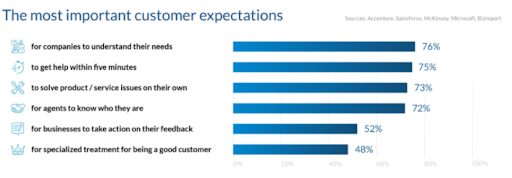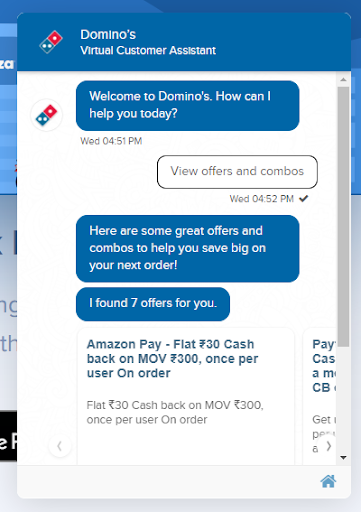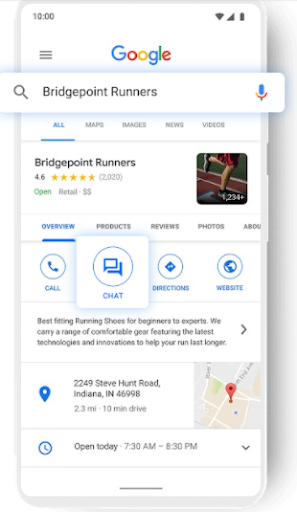Do you often find your support staff struggling with the horrifying number of calls for trivial issues every single day? And does this turn agents too flustered and stressed out to focus on critical customer concerns that require their undivided attention?
Imagine answering the question – “Where is my order and why is it getting delayed” 100 times in a day!
Well, you are not alone. This is the story of almost every other business today.
Accommodating low-value customer calls in a day without the necessary bandwidth is only going to result in long hold times that are equally frustrating for agents as they are for customers.
So, what should you do? You can’t simply abandon customers and leave them to their own devices.
Thankfully, there is a practical solution to this problem and that is call deflection.
Call deflection is a solution-focused approach that directs customers to faster channels like chatbots and self-service portals that are noted for their impeccable convenience and speed.
In this blog, we have covered every little detail about call deflection so that you can make up your mind and embrace the fact that:
Not every customer call is worth your time and attention!
Dive in to explore the benefits of call deflection and some powerful strategies to implement in your customer support funnel.
Let’s go!
What is Call Deflection?
Call deflection gives customers a choice to shift to a digital channel and get their issues resolved in real-time. It is a process that routes a customer’s call to suitable, low-cost digital channels, with the aim to reduce the inflow of calls and eliminate long hold times.
These digital channels can be anything from self-service portals and live chat to AI contact centers, chatbots, in-app guidance, and mobile messaging.
Call deflection shouldn’t be confused with call forwarding. Unlike call forwarding, call deflection doesn’t send the call to a different number. Instead, it puts customers at the forefront by giving them the power to decide if they want to continue with the call or switch to a faster digital channel.
How Does Call Deflection Work?
Call deflection is a simple technique to divert customers to more convenient channels at every stage of their journey with your brand. However, this technique works well only when you have a complete idea of your customer’s interests, preferences, and habits.
Track the channels used by your customers in the past and analyze CSAT scores. This will help you figure out the channels that will best suit their needs.
For example, if a customer has been an active user of your self-service portal but suddenly calls your support staff one day. It simply means that the customer couldn’t resolve the issue through your help center.
In this case, you can encourage the customer to give your live chat a shot. Since chats are handled by live operators, the customer can explain the concern and get it addressed in minutes.
Every customer works differently. When you know what they really need, you are better positioned to take them down a path that guarantees success.
Top Benefits of Call Deflection
A huge surge of calls every day keeps agents on the edge of their seats – always overwhelmed and frustrated. This ultimately impacts their performance and the experience customers receive. Your company as well as your customers, both are on the losing end, in such a scenario.
Call deflection can prevent such situations and provide many other benefits, such as:
Keeps Your Customer Service Cost in Control
Every business sets aside a dedicated budget for customer service. However, with the ever-increasing calls, it’s challenging to stick to the budget as you would need to regularly invest in team expansion.
Deploying call deflection can help you point customers to channels that are more favorable for them and help in reducing customer service costs. This creates a win-win scenario where customers are happy with their basic issues solved quickly, and you are relieved from handling low-value calls.
According to research by Mckinsey, adopting digital channels can bring down your customer service cost by 20 to 40%.
Delivers Delightful Experiences
Customer experience is compromised with long call queues and endless waiting times. And sometimes, customers are even passed from one agent to another, which further fuels their frustration.
Call deflection in contact centers is a highly effective process that lets you point customers to the right channel that’s far more helpful and definitely less painful than calls.
While the phone’s importance cannot be denied for critical issues that need human intervention, digital channels work well for most basic issues, so they can be used to deliver instant delight.
Gives Your Agents Space to Breathe & Be Productive at Work
Solving the same issue 100 times in a day can leave agents all bored, overwhelmed, and unproductive at the end of the day. It squeezes agents of all energy and enthusiasm to the extent that when a real problem arises, they are not in the right frame of mind to solve it.
Call deflection techniques are known to reduce the inflow of calls, giving agents the space to breathe and the time to get their hands on high-priority customer issues. This positively impacts the speed with which agents respond and the quality of answers they deliver.
Call Deflection Strategies for Happy Agents & Happier Customers
For successful call deflection, you need the support of practical customer-focused strategies. Here are 6 call-deflection strategies you can implement today to keep your agents productive and customers delighted.
Create a Comprehensive & Searchable Knowledge Base
If there is one thing modern customers seek today, it’s convenience.
Self-service is one of the most effective ways to ensure that customer issues are resolved as fast as possible and with little to no hassles.
This is a major reason customers today have a strong preference for self-service platforms among customers.
In fact, 73% of customers expect brands to help them solve problems on their own.

Fail to meet customers’ demand for convenience, and they will have no choice but to contact you directly through calls, burdening your support team even more.
Creating a self-service knowledge base is paramount to stop customers from approaching you for trivial issues.
Your knowledge has to be much more than a platform with large blocks of text. It should be a well-structured and highly-searchable portal that shows up accurate results, every time customers type a question.
Here are a few tips to offer 24×7 knowledge-centered support to your customers:
- Cover all potential problems and detailed solutions in your call center knowledge base.
- Add relevant keywords to articles to make content discovery easy.
- Make it easy for customers to access your knowledge base via multiple devices and browsers.
- Convert ticket topics into useful articles and turn your knowledge base into a rich information resource.
A stellar knowledge base for your call center is a proactive approach to customer service. It lends a helping hand to customers right when they need it, preventing the need to call you for petty matters.
Here’s a short video that explains the process of creating a self-service knowledge base.
Adopt Live Chat for Instant Issue Resolution

Another strategy to improve call deflection is adopting live chat software in your customer support process.
Live chat hits that sweet spot where convenience meets quality. It serves as the middle ground between phone calls and self-service support. While customers don’t have to go through the frustrating calls, they are also relieved from the hard work of browsing knowledge-base articles.
With live chat, customers can directly chat with the operator and explain their problems. While they sit back and relax, operators look into the issue and present a suitable solution.
Operators can either give a straightforward answer or even direct customers to a helpful knowledge base article for quick assistance.
What’s interesting about live chat is that operators can handle multiple chats at once, which is not a possibility with phone calls. This means, even with limited support capacity, you can cater to a large number of requests, while ensuring equal attention to each of them.
If you are wondering how to set up a live chat, here’s a short video for you.
Make it Easy for Customers to Raise Tickets
While basic problems can be easily solved via self-service and chat, there are complicated matters that need your team’s wholehearted efforts.
Phone call is undeniable, one of the best methods to get such problems solved. However, as we all know, this traditional method has its own drawbacks, the long wait time being one of many.
Never-ending hold times give customers the cold shoulder, forcing them to hang up and ultimately killing the customer experience!

Is there a way customers can contact you for serious issues without calling your support team?
Yes, there is.
With a streamlined ticketing process, you can enable customers to raise tickets right from where they are and get notified of the solutions.
To make the process of raising tickets effortless, you can add ticket forms to your knowledge base or embed them on your website. Customers can also raise tickets via live chat if they aren’t satisfied with the solutions operators provide.
These tickets are then accumulated in your help desk, where agents can manage and address them as per priority. They can even collaborate internally on tickets and discuss solutions before replying to customers.
Want to know how a ticketing system works and how it can help you initiate call deflection?
This video holds the right answer.
Let Customers Support Each Other Through a Community Forum
When you give customers a platform to share their wins, failures, and challenges with each other, you turn them from aimless callers to collaborative problem solvers.
Why would customers want to call you when they are part of a closed group of fellow customers who have an instant solution to their problems?
An online community forum accessible on the web and mobile devices helps customers initiate conversations, and share best practices, tips, and all the necessary resources with each other.
Such a closed space makes way for meaningful peer-to-peer interactions that provide real-time assistance to customers.
However, you need to be a little cautious as sometimes customer interactions can take the wrong route and end up aggravating problems. Keep a firm track of what is being discussed and where a conversation is headed. You can always pitch in by providing factually correct information and steering conversations toward a positive outcome.
While a community forum keeps your call deflection rate high by proactively solving problems, it also helps you build an army of loyal customers.
Answer Standard Questions With a Chatbot
Another digital channel appropriate for call deflection is a Chatbot.
AI-powered and 24×7 accessible, chatbots track customers’ browsing behavior and utilize your information resources to answer customer questions in real-time. As there is no human involvement in chatbots, they are ideal for answering only standard questions, such as:
“What is the pricing of XYZ product?”
“How can I signup for my account?”

For questions that require deeper understanding and a nuanced approach, chatbots are intelligent enough to direct them to the chat operators, guaranteeing a quick resolution.
Chatbots are also equipped to automatically create tickets, share relevant knowledge base articles, and even conduct simple tasks such as booking appointments without agent intervention.
Chatbot’s capability of pre-emptively solving questions asked by customers and being at their disposal 24×7 makes it a perfect choice for call deflection. You can significantly reduce low-value calls for transactional questions by deploying chatbots on your website.
Keep Customers Closer Through Google’s Business Messages
Every time customers search for the contact details of a company on Google, they are shown the customer care number. And bam, customers call that number, only to be welcomed by the irritating music, signaling that they have to wait until their turn comes.
Google’s Business Messages can turn around this situation and help you achieve a good call deflection rate.
Business Messages is a recent launch by Google that provides customers with a unified conversational messaging platform. Customers can privately message companies through Google Maps, Google Search, or directly from a company’s website.
It works like any other messaging service with automated welcome messages, typing indicators, visual aids, and a lot more. You can engage with customers right in their moment of need and deliver quick, contextual, and personalized experiences at every step of their journey.

Deflect Calls to Delight Customers
In the fast-paced and highly-impatient world of today, a delay of even a few minutes can be a death sentence for brands.
While customers have to bear the frustration of long hold times, imagine the drudgery of agents answering repeated questions countless times in a day.
Call deflection is a sure-shot way to bring down your call volume without compromising on customer satisfaction.
To start with, you use a knowledge base software to create a self-service portal for customers where they can solve problems right when they arise. Deploying live chat and chatbots is another strategy you can implement to increase call deflection.
You can also build a community forum, leverage Google’s Business Messages, and make ticket submission easy for customers.
Such robust strategies will open the door for you to deliver customer delight through channels that are faster and more convenient than phone calls.
Follow these practical strategies to increase customer satisfaction with call deflection today!
FREE. All Features. FOREVER!
Try our Forever FREE account with all premium features!








